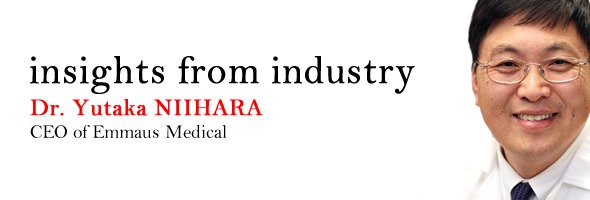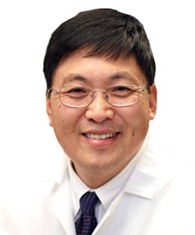
Please could you give a brief introduction to sickle cell disease?
Sickle cell disease is a devastating hereditary condition that affects millions of people, particularly those in West and Central Africa as well as people of African descent in the United States, Europe and South America. The disease involves normally round soft red blood cells being deformed into rigid and sickle shaped red blood cells. Sickle cell disease is marked by severe pain, life threatening infections and organ damage.
Is sickle cell disease the same disorder as sickle cell anemia?
There are several types of sickle cell disease. The most common are sickle cell anemia, sickle-hemoglobin C disease, sickle β0 thalassemia and sickle β+ thalassemia.
Sickle cell anemia is the form that contains two hemoglobin S genes. Sickle hemoglobin C is a form of sickle cell disease characterized by the presence of two abnormal types of hemoglobin, S and C. Sickle β0 and β+ thalassemia are forms of sickle cell disease characterized by the presence of hemoglobin S and β thalassemia. Those patients all experience anemia as well as painful crises and have an increased risk of infection.
People with only one sickle cell gene and a normal hemoglobin gene are said to have sickle cell trait, which in some cases may cause far milder symptoms. People with sickle cell trait usually show no symptoms, but can experience limitations with heavy physical exertion.
Who does sickle cell disease affect?
Sickle cell disease primarily affects people of African descent but is increasingly appearing in people of Hispanic descent. An estimated 100,000 people in the United States , 80,000 in the Europe Union, and four to five million people worldwide, primarily in Latin America and Africa, are afflicted.
What current treatments are available for sickle cell disease?
Today there is no universal cure for sickle cell disease. Current treatments primarily include pain medication, antibiotics, hydration (IV fluids), and Hydroxyurea, which decreases the incidence of painful crises but is often not well tolerated. There is stem cell transplant, but it is costly and not available to most patients.
Why is there no universal cure for sickle cell disease?
Over the years, thousands of medications have been proposed for treating sickle cell disease, but most of them were eliminated at the pre-clinical level. Only about 80 medications have actually entered into clinical trials, and only three including ours have made it into Phase III trials.
Please could you tell us what treatment Emmaus Medical is developing for sickle cell disease?
We are developing an orally administered L-glutamine treatment. We discovered that L-glutamine will increase the NAD redox potential of sickle red blood cells, making them much healthier. An in-vivo study in the late 1990s showed that oral L-glutamine could significantly increase the NAD redox potential in sickle red blood cells, which may decrease the oxidative susceptibility.
Among patients treated with L-glutamine in the study, there were subjective reports of improvements in chronic pain and energy levels. In sickle cell disease, many of the complications and much of the suffering can be linked to the tendency of sickle red blood cells to stick to the endothelial cells that make up the inner lining of the blood vessels.
This slows the travel of the red blood cells through capillaries, which often leads to blockages, or vasoocclusion. This blockage causes pain, inflammation and organ failure.
Finding a means of reducing this adhesion to the vascular endothelium has been an important goal of our research. L-glutamine has been shown to reduce the adhesion of sickle red blood cells in human umbilical vein endothelial cells, suggesting a positive physiological effect for L-glutamine in the disease.
How did this treatment originate?
My mentor, Dr. Charles R. Zerez conducted a study in the late 1980s and found that individuals with sickle cell disease have red blood cells that are more susceptible to oxidation damage using a new technique called NAD redox potential, which gauges oxidant stress in red blood cells.
Our approach was to provide more raw materials to help red blood cells to improve the NAD redox potential. We learned that glutamine has been shown to play an important role in the redox status of sickle red blood cells, which were taking in glutamine at an unusually high rate. The evidence suggested that glutamine is used in sickle cells to produce the anti-oxidant molecule NAD. Our research has since focused on using L-glutamine, an inexpensive amino acid.
What is new about this treatment?
Emmaus Medical’s treatment using L-glutamine is getting into the very final phase of the FDA clinical trial. The drug has been granted orphan drug status in the United States and Europe.
At what stage of development is this treatment at?
Enrollment in the FDA Phase III trial began in 2010, and the study is expected to be completed in 2013. The clinical study involves over 200 patients at more than 30 prominent research sites across the United States.
When do you expect that it will be available for patients?
Right now, we are focused on completing our Phase III clinical trial, which we expect to complete in 2013.
What impact do you think this treatment will have?
I started this company because as a hematologist, I saw firsthand the suffering of my sickle cell patients. My hope is that this treatment will allow us to help sickle cell sufferers reduce their number of pain crises and improve quality of their lives.
How do you think the future of sickle cell disease treatments will progress?
I hope that researchers will continue to look for new treatments to help patients with this disease. Beyond helping patients with pain crises, there are other complications associated with this disease that need to be addressed. If we can reduce organ damages, it may lead to extending their life-expectancy.
Also, the disease affects them socially as many of them are unable to work or attend school regularly. It is my hope that someday, sickle cell patients will be able to enjoy the type of lifestyle that most people in the world enjoy.
Emmaus recently attended the 40th Annual Sickle Cell Disease Association of America National Convention. Please could you give a brief summary of the event?
The SCDAA Annual Convention is designed to discuss the latest scientific and clinical information related to sickle cell disease, with an overall effort to advocate for improved quality of life for individuals and families affected by the disease.
What plans does Emmaus Medical have for the future?
We plan to complete our trial and hope that we can make the drug available to sickle cell patients.
Would you like to make any further comments?
I have been working for a number of years to develop this treatment and I am very hopeful that we will be able to help sickle cell sufferers around the world very soon.
Where can readers find more information?
Please visit www.emmausmedical.com and www.clinicaltrials.gov for more information about our ongoing efforts.
About Dr Niihara
 Dr. Yutaka Niihara was born in Tokyo, Japan and immigrated to Hawaii in 1973 at age 13. He studied Religion at Loma Linda University receiving his BA and later received his MD from the same institution. Dr. Niihara received his Internal Medicine training at Kettering Medical Center in Kettering, Ohio and his Hematology/Oncology training at Harbor-UCLA Medical Center. He received his MPH from Harvard School of Public Health.
Dr. Yutaka Niihara was born in Tokyo, Japan and immigrated to Hawaii in 1973 at age 13. He studied Religion at Loma Linda University receiving his BA and later received his MD from the same institution. Dr. Niihara received his Internal Medicine training at Kettering Medical Center in Kettering, Ohio and his Hematology/Oncology training at Harbor-UCLA Medical Center. He received his MPH from Harvard School of Public Health.
Dr. Niihara joined as Faculty of David Geffen School of Medicine in 1992 and currently serves as Clinical Professor of Medicine. He has focused his research work on sickle cell disease since 1992. His honors include: Recipient of NIH FIRST award in 1997 and of FDA Orphan Drug Development Award in 2000. Dr. Niihara founded Emmaus Medical, Inc. in 2003 as a vehicle for commercial development of the treatment for sickle cell disease, which was started at LA Biomed at Harbor-UCLA Medical Center.